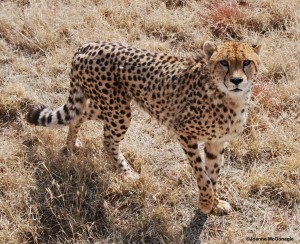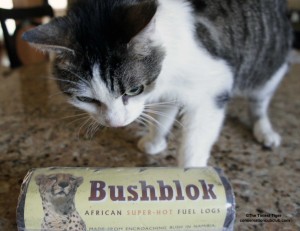The Cheetah is Racing for Survival
December 4, 2013 is the third annual International Cheetah Day. Cheetah Conservation Fund (CCF) and its Founder and Executive Director, Dr. Laurie Marker ask the international community to celebrate the cheetah today, reflect on the importance of this iconic species, and act to support efforts to secure the cheetah’s future.
I had the honor of spending time in Namibia last year and find myself often thinking about returning. CCF’s work is vital for saving the cheetah and I hope that today you will take a few minutes to learn more about the cheetah and know that awareness and even just speaking to friends and family about the fact that cheetahs are vulnerable to extinction can help to bring about change for the better.
The Fastest and Oldest of all the Big Cats
The cheetah is not only the fastest, but the oldest of all the big cats. Having survived over three million years through an Ice Age and a genetic bottleneck, its numbers have now been decreased by 90% in the last 100 years. With only 10,000 cheetahs remaining in the wild, the cheetah population faces more threats than ever before, all of them caused by humans.
In honor of this day, Dr. Marker created the video, The State of the Cheetah. Filmed in Namibia, this video will give you a great overview of CCF and the tremendous strides they have taken to save the cheetah.
” The message of International Cheetah Day is that the cheetah needs our help, and everyone can help, right now, right where they are,” says Dr. Marker. ” A lot of people think that they can’t do anything to save the cheetah because they can’t go to AFrica, or they don’t have a lot of money. Awareness is a critical component of conservation. We can’t win the race for survival if no one knows the cheetah is vulnerable to extinction.”
Dr. Laurie Marker’s State of the Cheetah Address 2013
Cheetah Conservation Fund’s Work
Since the beginning, CCF has been working to create and provide solutions to save cheetahs by helping the people who live alongside them. CCF introduced Namibian livestock farmers to non-lethal predator control methods in the form of livestock guarding dogs. Anatolian shepherd and Kangal dogs are specially bred and trained to protect livestock against predators. When the guarding dogs are present among the livestock, predation rates drop as much as 80-100%.
CCF has also established similar guarding dog programs in four other countries. CCF works tirelessly with a network of individuals and organizations to combat the illegal pet trade and combats habitat loss by selectively harvesting the thickened thorn-bush that strangles the cheetah’s habitat, and using the biomass to create an award-winning fuel log called Bushblook. Pounce here to learn more about Bushblok.
And if you are super interested, like me, you can watch this video to learn even more about the cheetah and CCF.
Introduction to CCF, 2013
I hope you will spend a bit of time thinking and talking about cheetahs today. To learn more visit cheetah.org.
Thank you for caring about all cats, big and small.



They are so beautiful. I did not know there weren’t very many left. Very sad. That was so interesting. I am glad they have places that help or make people aware.
Sue B